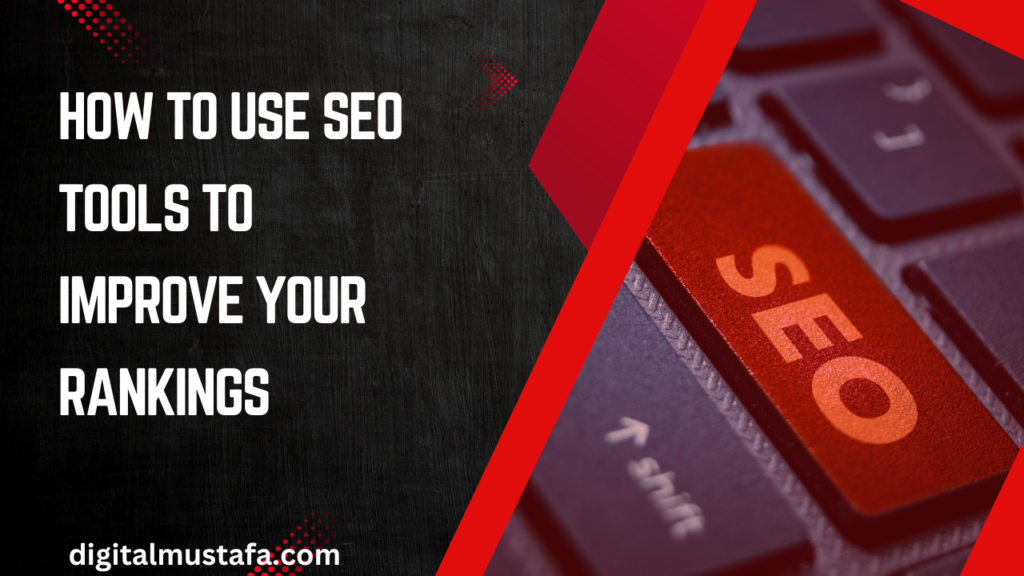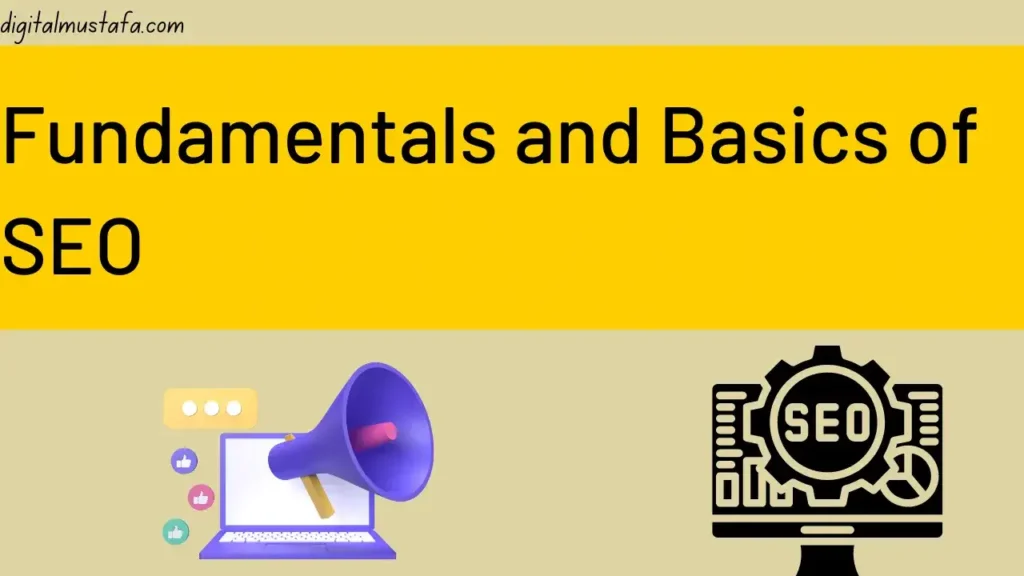In today’s competitive online environment, achieving high rankings on search engines is essential for driving traffic to your website. Search Engine Optimization (SEO) is the process of improving your website to increase its visibility on search engine results pages (SERPs).
While SEO can be complex, using the right tools can make the process more manageable and effective. This guide will walk you through How to Use SEO Tools to Improve Your Rankings, covering everything from keyword research to backlink analysis, content optimization, and more.
Understanding the Importance of SEO Tools
SEO tools are designed to help you optimize your website by providing insights, data, and actionable recommendations. These tools can save time, improve accuracy, and uncover opportunities that manual analysis might miss. By using SEO tools effectively, you can:
- Identify High-Value Keywords: Discover keywords that your target audience is searching for.
- Analyze Competitors: Understand what your competitors are doing and how you can outperform them.
- Monitor Your Rankings: Track your keyword rankings over time and measure the effectiveness of your SEO efforts.
- Optimize On-Page Elements: Improve your website’s content, meta tags, and structure for better search visibility.
- Build Quality Backlinks: Identify and acquire backlinks that boost your site’s authority.
Types of SEO Tools
SEO tools come in various types, each serving a specific purpose. To improve your rankings, it’s important to understand the different categories of tools and how they can be used.
1. Keyword Research Tools
Keyword research is the foundation of any successful SEO strategy. These tools help you identify the keywords your audience is searching for, understand their search volume, competition, and relevance to your business.
Popular Keyword Research Tools:
- Google Keyword Planner: A free tool that provides keyword ideas, search volume, and competition data.
- Ahrefs: A comprehensive tool that offers keyword ideas, difficulty scores, and competitor analysis.
- SEMrush: Provides keyword suggestions, search trends, and competitive analysis.
2. On-Page SEO Tools
On-page SEO tools focus on optimizing individual pages on your website. These tools help improve meta tags, content, headings, and overall structure to ensure that search engines can easily understand and rank your content.
Popular On-Page SEO Tools:
- Yoast SEO: A WordPress plugin that provides real-time on-page SEO analysis and recommendations.
- Screaming Frog: A website crawler that identifies on-page SEO issues like broken links, duplicate content, and missing meta tags.
- Moz On-Page Grader: Analyzes on-page elements and provides actionable recommendations to improve your content.
3. Technical SEO Tools
Technical SEO tools focus on the backend of your website. These tools help ensure that your website is easily crawlable, loads quickly, and is free of technical errors that could harm your rankings.
Popular Technical SEO Tools:
- Google Search Console: A free tool that monitors your website’s performance, indexing status, and search visibility.
- GTmetrix: Analyzes your website’s speed and provides recommendations to improve load times.
- Screaming Frog: Also useful for technical SEO, as it identifies issues like redirect chains, orphan pages, and crawl errors.
4. Backlink Analysis Tools
Backlinks are a critical factor in SEO rankings. These tools help you analyze your backlink profile, identify high-quality links, and discover opportunities to acquire more backlinks.
Popular Backlink Analysis Tools:
- Ahrefs: Provides comprehensive backlink analysis, including referring domains, anchor text distribution, and link growth over time.
- Majestic: Offers detailed backlink reports, including trust and citation flow metrics.
- Moz Link Explorer: Helps identify backlink opportunities and monitor your site’s link profile.
5. Rank Tracking Tools
Rank tracking tools allow you to monitor your website’s position on SERPs for specific keywords. Tracking your rankings over time helps you measure the effectiveness of your SEO efforts and make necessary adjustments.
Popular Rank Tracking Tools:
- SEMrush: Provides daily updates on keyword rankings, visibility, and competitors’ performance.
- Ahrefs: Offers rank tracking with historical data, SERP features, and competitor comparison.
- SERPWatcher: A simple tool focused on tracking keyword positions and visibility scores.
Here’s a table summarizing the key types of SEO tools and their functions:
| SEO Tool Type | Function | Example Tools |
|---|---|---|
| Keyword Research | Identifies high-value keywords | Google Keyword Planner, Ahrefs |
| On-Page SEO | Optimizes individual page elements | Yoast SEO, Screaming Frog |
| Technical SEO | Ensures site crawlability and performance | Google Search Console, GTmetrix |
| Backlink Analysis | Analyzes and builds quality backlinks | Ahrefs, Majestic |
| Rank Tracking | Monitors keyword rankings over time | SEMrush, SERPWatcher |
How to Use SEO Tools to Improve Your Rankings
Now that you’re familiar with the types of SEO tools available, let’s dive into how you can use them to improve your rankings step by step.
1. Conduct Comprehensive Keyword Research
Keyword research is the first step in optimizing your website for search engines. Start by using a keyword research tool like Google Keyword Planner, Ahrefs, or SEMrush to identify keywords that are relevant to your business and have a good balance of search volume and competition.
Steps to Conduct Keyword Research:
- Identify Seed Keywords: Begin with broad terms related to your industry or products.
- Expand with Long-Tail Keywords: Use tools to find longer, more specific keywords that are easier to rank for.
- Analyze Competition: Look at which keywords your competitors are ranking for and identify gaps you can target.
- Prioritize Keywords: Focus on keywords that align with your content strategy and have the potential to drive the most valuable traffic.
Here’s a table showing the difference between short-tail and long-tail keywords:
| Keyword Type | Example | Search Volume | Competition | Conversion Rate |
|---|---|---|---|---|
| Short-Tail | “Digital Marketing” | High | High | Low |
| Long-Tail | “Digital Marketing Tips for Small Businesses” | Medium | Low | High |
2. Optimize On-Page Elements
On-page SEO involves optimizing the content and HTML source code of individual pages on your website. This includes title tags, meta descriptions, headers, images, and internal links. Tools like Yoast SEO can help you ensure that each page is fully optimized.
Steps to Optimize On-Page SEO:
- Title Tags: Ensure your title tags are concise, include the target keyword, and are compelling.
- Meta Descriptions: Write clear and informative meta descriptions that include relevant keywords.
- Headers (H1, H2, H3): Use headers to structure your content, making it easier for users and search engines to navigate.
- Content Optimization: Include relevant keywords naturally within the content, and aim for high-quality, informative text.
- Image Alt Text: Use descriptive alt text for images to improve accessibility and SEO.
Here’s a comparison of well-optimized vs. poorly optimized title tags:
| Title Tag Type | Example | SEO Impact |
|---|---|---|
| Well-Optimized | “Best Coffee Shops in New York | Top Cafes to Visit” |
| Poorly Optimized | “Coffee Shops” | Low Visibility |
3. Enhance Technical SEO
Technical SEO focuses on ensuring that your website is easy for search engines to crawl and index. Tools like Google Search Console and Screaming Frog can help identify technical issues that may be hindering your rankings.
Steps to Enhance Technical SEO:
- Fix Crawl Errors: Use Google Search Console to identify and fix crawl errors, such as 404 pages and broken links.
- Improve Site Speed: Use GTmetrix to analyze your website’s load time and implement recommendations to improve speed.
- Optimize Mobile Usability: Ensure your website is mobile-friendly, as mobile usability is a ranking factor.
- Create an XML Sitemap: Submit an updated sitemap to Google Search Console to help search engines discover your pages.
Here’s a table comparing common technical SEO issues and their impact on rankings:
| Technical SEO Issue | Description | Impact on Rankings |
|---|---|---|
| Crawl Errors | Pages not accessible by search engines | Lowers ranking potential |
| Slow Load Times | High page load times | Increases bounce rate |
| Mobile Usability | Poor mobile experience | Penalizes mobile rankings |
| Duplicate Content | Same content on multiple pages | Confuses search engines |
4. Build and Analyze Backlinks
Backlinks are one of the most critical ranking factors in SEO. A strong backlink profile signals to search engines that your site is authoritative and trustworthy. Use tools like Ahrefs or Majestic to analyze your current backlinks and identify opportunities for new ones.
Steps to Build and Analyze Backlinks:
- Audit Your Backlink Profile: Use a tool to analyze the quality and quantity of your backlinks.
- Identify Link-Building Opportunities: Find potential websites in your niche that could link to your content.
- Conduct Outreach: Reach out to websites with valuable content or resources that could naturally link to your site.
- Monitor Competitors: Analyze your competitors’ backlinks and try to replicate their best links.
Here’s a comparison of high-quality vs. low-quality backlinks:
| Backlink Type | Source | SEO Impact |
|---|---|---|
| High-Quality Backlink | Authoritative sites in your niche | Significantly boosts rankings |
| Low-Quality Backlink | Spammy or irrelevant sites | Can harm rankings, may lead to penalties |
High-quality backlinks come from reputable and relevant websites within your industry. They carry significant SEO weight and can improve your rankings. On the other hand, low-quality backlinks from spammy or unrelated sites can have the opposite effect, potentially leading to search engine penalties.
5. Monitor and Track Your Rankings
Tracking your keyword rankings is essential to understanding the effectiveness of your SEO strategy. Rank tracking tools like SEMrush, Ahrefs, and SERPWatcher allow you to monitor your progress over time and adjust your strategy as needed.
Steps to Monitor and Track Rankings:
- Set Up Rank Tracking: Choose the keywords you want to track and set up your rank tracking tool to monitor them.
- Analyze Trends: Look for patterns in your rankings, such as upward or downward trends, and correlate them with your SEO efforts.
- Identify SERP Features: Note which SERP features (e.g., featured snippets, local packs) are present for your target keywords and adjust your strategy to capture these opportunities.
- Compare with Competitors: Track your competitors’ rankings for the same keywords to identify areas where you can improve.
Here’s a table comparing different rank tracking tools and their features:
| Tool | Key Features | Price Range |
|---|---|---|
| SEMrush | Daily updates, competitor analysis | $119.95-$449.95/month |
| Ahrefs | Historical data, SERP features | $99-$999/month |
| SERPWatcher | Simple UI, visibility score | $29.90-$79.90/month |
Advanced SEO Tool Strategies
To further enhance your SEO efforts, consider incorporating advanced strategies using SEO tools. These strategies go beyond basic optimization and can provide a competitive edge.
1. Content Gap Analysis
Content gap analysis involves identifying topics or keywords that your competitors rank for, but you don’t. Tools like Ahrefs and SEMrush can help you discover these gaps, allowing you to create content that fills them and attracts more traffic.
Steps for Content Gap Analysis:
- Identify Competitors: Use your SEO tool to identify competitors in your niche.
- Analyze Competitor Content: Use the content gap analysis feature to find keywords that your competitors rank for but you don’t.
- Create Targeted Content: Develop content that addresses these gaps, focusing on quality and relevance to your audience.
Here’s a table showing the benefits of content gap analysis:
| Benefit | Description |
|---|---|
| Increased Traffic | Attracts visitors searching for untapped topics |
| Competitive Advantage | Outperforms competitors by covering missed topics |
| Improved Authority | Establishes your site as a comprehensive resource |
2. Topic Clusters and Pillar Pages
Topic clusters and pillar pages are advanced content strategies that involve organizing content around central themes. This structure improves site architecture and enhances SEO by creating internal linking opportunities and boosting topical relevance.
Steps to Implement Topic Clusters:
- Identify Core Topics: Choose broad topics that are relevant to your business.
- Create Pillar Pages: Develop comprehensive guides on these topics, serving as the central hub for related content.
- Build Cluster Content: Create supporting articles that link back to the pillar page, each targeting specific subtopics or long-tail keywords.
- Optimize Internal Links: Ensure that all cluster content links back to the pillar page and vice versa, creating a strong internal link structure.
Here’s a table comparing traditional content structures vs. topic clusters:
| Structure Type | Description | SEO Benefit |
|---|---|---|
| Traditional Structure | Separate, unrelated articles | Limited internal linking |
| Topic Clusters | Interconnected content around central themes | Enhanced topical relevance |
3. Local SEO Optimization
If your business serves a local audience, local SEO is crucial for improving your rankings in location-based searches. Tools like Google My Business, Moz Local, and BrightLocal can help you optimize your local presence and improve your visibility in local search results.
Steps for Local SEO Optimization:
- Claim and Optimize Google My Business: Ensure your business listing is accurate, complete, and regularly updated.
- Build Local Citations: Use tools like Moz Local to submit your business information to local directories and citation sites.
- Optimize for Local Keywords: Include location-based keywords in your content, title tags, and meta descriptions.
- Encourage Customer Reviews: Positive reviews on platforms like Google and Yelp can boost your local rankings.
Here’s a table highlighting key factors in local SEO:
| Local SEO Factor | Description | Impact on Rankings |
|---|---|---|
| Google My Business | Completeness and accuracy of your listing | High |
| Local Citations | Consistency of business information | Medium |
| Customer Reviews | Quantity and quality of reviews | High |
| Local Keywords | Use of location-based keywords | Medium |
Conclusion
Using SEO tools effectively is key to improving your website’s rankings on search engines. From keyword research and on-page optimization to technical SEO and backlink analysis, each tool plays a crucial role in building a successful SEO strategy. By integrating these tools into your workflow, you can gain valuable insights, optimize your content, and ultimately, achieve higher rankings.
Remember, SEO is an ongoing process that requires regular monitoring and adjustment. As search engines update their algorithms and competitors enhance their strategies, staying ahead of the curve is essential. By leveraging the power of SEO tools, you can ensure your website remains competitive and continues to grow in search visibility.
Whether you’re a small business owner, a digital marketer, or a webmaster, mastering the use of SEO tools is an investment that will pay off in the long run. Start incorporating these tools into your strategy today, and watch your rankings soar.



